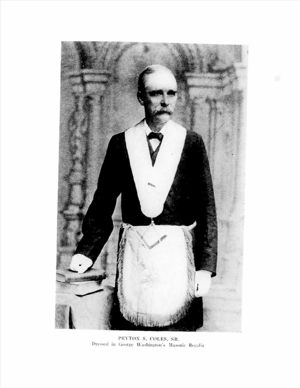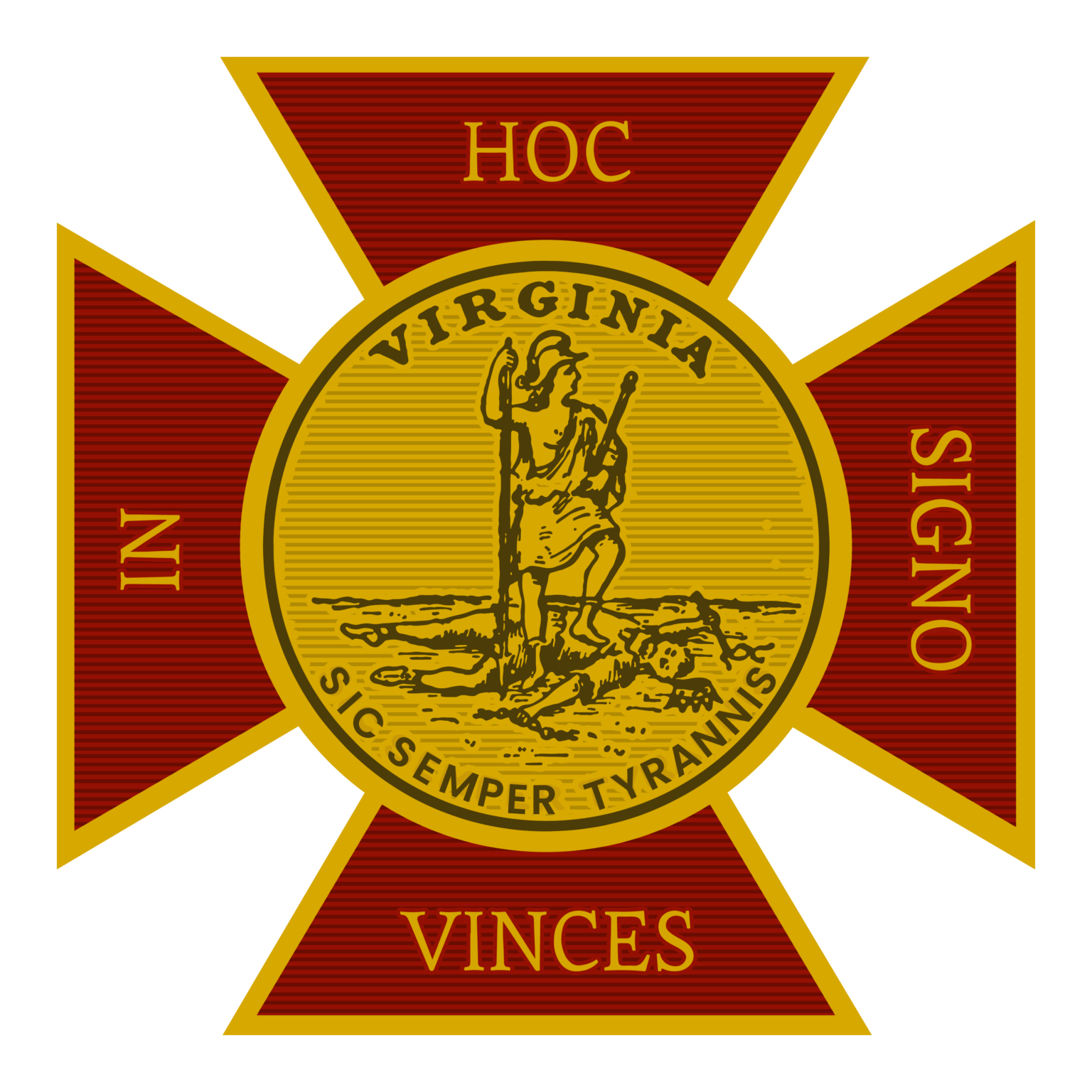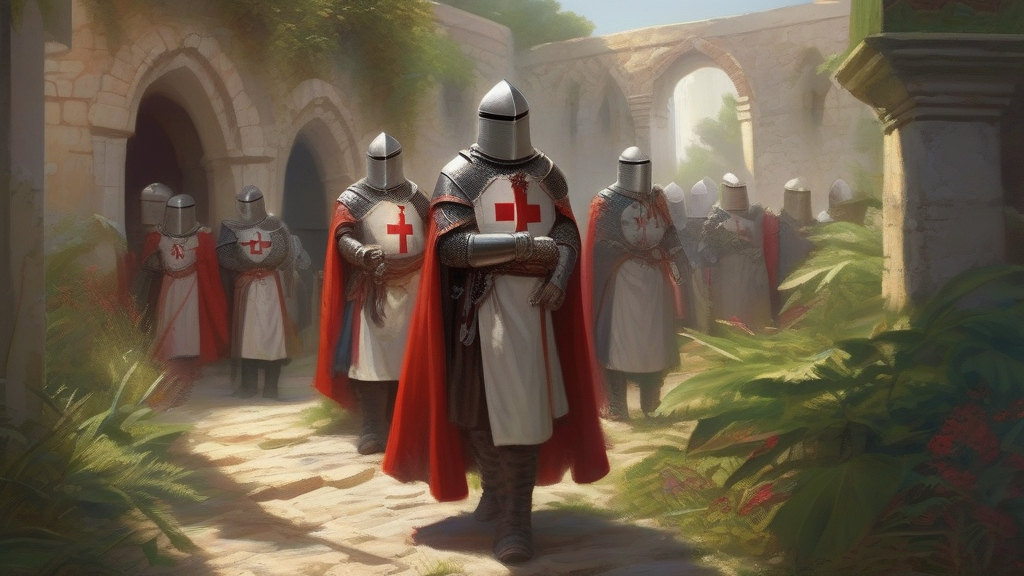
Peyton Skipwith Coles, Sr. (1826-1887)
Peyton Skipwith Coles, Sr. was born on April 1, 1826, on the same mother earth that 5 generations of his forefathers trod in Albemarle County, Virginia. The Virginia Coles, as they were known, could trace their heritage back to two brothers, John and William Coles, who came to the new world in 1730 from England and settled in Richmond, Virginia. John Coles, the lineal patriarch of Peyton Coles’ family, purchased several large tracts of land in Halifax and Goochland Counties that were cutoff to eventually form Albemarle County.
This tract of land was at its largest 4,960 acres in all according to a survey completed in 1772 by Daniel Smith. The land provided rich soil for farming and firmly established a successful descendent line of aristocratic agriculturalists who were intertwined in all matters of commerce, leadership, and politics in the community where they resided.
Peyton was fortunate to be born, live, and die on this same property. It is still known today as Estouteville. The palatial Green Mountain estate with stately mansion 14 miles South of the City of Charlottesville was owned by his father, Colonel John Coles, and mother, Selina Skipwith. The Skipwith family was of English royal descent and had emigrated to Virginia after the battle of Worcester and English civil war in that country in 1651. He was the third child of four children. He was raised as an old breed gentleman of many generous and noble sentiments. The Coles family upheld a code of the strictest integrity and honor of character deeply rooted in the Christian faith. They were prosperous in business and industry and conducted life in a judicious and prudent manner that had been passed down through successive generations.
He was educated at the Episcopal High School and then at the College of William and Mary. At the age of 26, he married his 21-year-old first cousin, Julia Isaetta Coles, on March 17, 1852, and the couple settled into a charmed and comfortable family life. They “dispensed hospitality with a lavish hand and open heart at his ancestral home. Estouteville became known far and wide as a center of culture and grace.”
The wealth of his family provided Peyton with an opportunity to enjoy travel as well as social and leisure pursuits, one of which was a rise to prominence in the fraternity of Freemasonry. It was without a doubt his life’s passion. He would become widely known throughout the Commonwealth of Virginia and beyond in his time. He was made a Master Mason on April 5, 1867, in Widow’s Sons’ Lodge No. 60 in Charlottesville. He made his first appearance at the Grand Lodge of Virginia’s Annual Communication in December of 1868 representing his mother lodge as Junior Warden. From that day forward until his death, he was never absent from one of its sessions. He would serve Widow’s Sons’ No. 60 as Master in 1871, 1872, and 1874. He was dedicated in the York Rite appendant bodies and became the High Priest of Keystone Chapter No. 58 from 1873 until 1875 and Commander of Charlottesville Commandery No. 3 from 1872 until 1878. He would serve as District Deputy Grand Master from 1874 until 1876 for three consecutive terms. It was said that “while he was retained in office, although living 14 miles from the lodge room, and frequently exposed to every inclemency of the weather on horseback, he did not miss a single meeting, stated or special.” He was thoroughly informed in the letter of the ritual in every 190 degree, and to him it was a labor of love to impart Masonic information to any brother who desired to be instructed.
He became the Grand Representative to the Grand Lodge of Florida. He was appointed Grand Senior Deacon in 1873 and was promoted through the chairs until he was elected Grand Master of Masons in Virginia at the 102nd Grand Annual Communication in 1879. He was re-elected and presided over the 103rd Grand Annual Communication in 1880. He therefore served two terms consecutively as Grand Master from December 1879 until December 1881. As Grand Master in 1880, he presided over the public Masonic laying of three cornerstones. The first was at the Windsor Baptist Church in Isle of Wight County. The second was at the Presbyterian Memorial Chapel in Fredericksburg, Virginia. Finally, on June 23, 1880, he participated in the cornerstone laying of the King’s Mountain monument in Blacksburg, South Carolina along with the Grand Masters of South Carolina and Georgia. He also chartered 3 lodges: Liberty Hall Lodge No. 104 in Washington County, Piedmont Lodge No. 152 in Henry County, and Low Moor (Clifton Forge) Lodge No. 166 in Alleghany County. As good fortune would have it, all three of these lodges are still in working operation today.
In jurisprudence, he acted as Grand Master to prevent lodges from the act of incorporation and therefore from becoming subjected to state laws. He based his decision on a previous conclusion made by the Grand Master of New Jersey in 1867. This decision essentially prevented lodges from being sued in a corporate capacity and from being tried in a court of law.
In Masonic etiquette and decorum, Most Worshipful Coles implored the brethren to maintain uniformity, consistency, and ultimately perfection in the ritual and to limit the practice of wearing conspicuous Masonic emblems. He wanted Masonic practice to remain true to the primitive purity and simplicity that had customarily graced the fraternity. He sought adherence to traditions and resisted innovations. He ordered the brethren “to let our membership in this Grand Fraternity be attested, not by the wearing of Masonic emblems, but by the practice of those cardinal virtues and the maintenance of those principles that mark us a separate and peculiar people.”
As the year 1880 ended, Peyton Skipwith Coles, Sr. would also find himself elected the Grand High Priest of Royal Arch Masons in Virginia as well as the Grand Commander of Knights Templar of Virginia in To date, he remains the only man in the storied history of the Masonic fraternity in the Commonwealth of Virginia to serve in the Grand East in all three York Rite bodies of Freemasonry in the same year. He accomplished this monumental achievement in 1881.
As Grand Master on October 18, 1881, he presided over one of the most auspicious special communications in the history of Virginia Freemasonry. In obedience to the request of the Joint Committee of the United States Congress, and in the presence of the President of the United States, Chester A. Arthur, Most Worshipful Coles laid the cornerstone of the Centennial Monument commemorating the battle of Yorktown victory and surrender of Lord Cornwallis which was the historic military action that brought forth the practical close of the Revolutionary War.
Most Worshipful Coles was literally outfitted with some of the finest representations of Virginia Masonic heritage at this ceremony. He wore the apron and sash worked by Adrienne de Lafayette, the wife of General Gilbert du Motier, the Marquis de Lafayette. These were presented by Lafayette to President George Washington at a visit to Mount Vernon in 1784 and were provided for use by the 191 brethren of Alexandria-Washington Lodge No. 22. They had been worn by Washington when he laid the cornerstone of U.S. Capitol Building on September 18, 1793, in Washington, DC. He presided in the chair, that according to local history, was once a gift from Norborne Berkeley, 4th Baron Botetourt, to the group of Freemasons that resided in Williamsburg when he was the Colonial Governor of Virginia between 1768 and 1770. It was also prescribed that Most Worshipful John Blair presided in this chair at the first meeting of the Grand Lodge of Virginia in 1778. It was provided by the brethren of Williamsburg Lodge No. 6. From his mother lodge, Widow’s Sons Lodge No. 60, he received a silver workman’s trowel. A token of their continued esteem and affection for their Most Worshipful brother. Most Worshipful Coles also received a silver trowel from Right Worshipful Charles S. Arthur, the Virginia Representative of the Grand Lodge of New York. Lastly, a gavel was loaned by the Grand Lodge of New York and Grand Master Horace S. Taylor, that was made from one of the deck timbers of the frigate Lawrence. The Lawrence was Naval Commodore Matthew C. Perry’s flagship at the Battle of Lake Erie. The gavel had already laid the cornerstones of the monument at Monmouth and the foundation of the Egyptian obelisk known as Cleopatra’s Needle in New York City’s Central Park. The cornerstone laying of the Centennial Monument at the Battle of Yorktown was the first time in the history of our country that the virtues and influence of the Masonic fraternity in the American Revolution were recognized by the Federal Government. 13 Grand Masters of the then 47 States attended along with numerous Freemasons from across the country and a Knights Templar escort led by the Grand Commander of Virginia, Right Eminent John Farran Regnault.
Most Worshipful Coles presided over the 104th Grand Annual Communication held in St. Alban’s Hall in Richmond on December 12th – 14th, 1881. In his last Grand Lodge of Virginia address as Grand Master, he championed the facts that the fraternity had received National attention by participating in the Yorktown Ceremony and that it had increased in size and had advanced it organizational development during his tenure. He implored the Brethren to remain “guided and sustained by the Great Architect and Ruler of the Universe. To His infinite love and fatherly care, we owe the blessings of peace and prosperity which we now enjoy, and to Him alone can we look for a continuance of the same through an unknown future.” He reflected on the sad duty of presiding over the Masonic funeral of Right Worshipful Mayo B. Carrington during the year, who was serving as the Grand Senior Warden at the time when he passed away to the celestial lodge above. In jurisprudence, Most Worshipful Coles upheld a decision, finalized into law by the Grand Lodge of Virginia in 1878, that all subordinate lodge by-law changes must be submitted through a District Deputy Grand Master to the Grand Master for approval prior to being changed. The topic was discussed due to a lodge providing life membership to its members without an approved change to its by-laws through the Grand Lodge. Most Worshipful Coles also reflected with gratitude on the diligent work of his Grand Secretary, Worshipful William B. Issacs, who had successfully established communication and correspondence with all known Masonic Grand Jurisdictions in the known world during his tenure as Grand Master and that all of them, both in the United States and abroad, apart from France, were most cordial and Masonic in nature. He then shared that in his travels as Grand Master he had attended a meeting in every lodge room in the Commonwealth during his 2-year term in the Grand East. He passed the gavel, and he accepted his place in history with a small request. “May the charity we all inculcate, veil my errors: and may your kind and cordial approval reward my labors.”
He presided as Grand Commander over the 60th Annual Assembly of Knights Templar of Virginia held at Lynchburg on Tuesday, August 10, 1882. He championed the Sir Knights of the Grand Commandery with the following statement “From the careful use of the ballot in the past, which is observable from the high moral, social and intellectual attainment which characterize our membership, I am sure it is not necessary for me to utter a word of caution as to its future use in the admission of candidates. Our order is founded on the Christian religion. It recognizes no church, no sect, or denomination. It requires simply, a belief in our Savior, Jesus Christ, in his merits as our redeemer and sanctifier; that he made an atonement for us, and that through him and his intercession we will finally be saved.” He notified the Sir Knights of a contested arbitration ongoing in the Grand Encampment of the United States to decide which tactics manual would be adopted as standard work. The two principle works in consideration were Colonel H.B. Grant’s tactics used by Kentucky and a few other Southern States or Myer’s tactics, who was a publisher in Chicago, Illinois, that seemed to lack proper military order. Grant’s tactics would ultimately prevail. Right Eminent Coles granted a charter to designate Fauquier Commandery No. 15 as a permanent establishment in the town of Markham, Virginia and he accepted an invitation for the Sir Knights of Virginia to participate in the Pennsylvania bicentennial celebration to be held on October 26, 1882. He also encouraged the Sir Knights to attend the upcoming Grand Triennial Conclave of the Grand Encampment of Knights Templar of the USA, being held in San Francisco, California in 1883 to support Past Virginia Grand Commander, Right Eminent Robert E. Withers, who was then Deputy Grand Master.
Peace and prosperity prevailed through the entirety of his year of leadership throughout the Commandery and he was reelected to the office of Grand Commander for a second consecutive term in He presided over the 61st Annual Assembly of Knights Templar of Virginia at Mason’s Hall in Danville on Tuesday, October 10, 1883. It was indeed a significant occasion in Virginia Templar Masonry because the newly elected Grand Master of the Grand Encampment, Right Eminent Robert E. Withers, was in attendance. Withers was received with honors due to his distinguished position and was recognized by the Commandery for the accolades of his influence as a former resident of the city of Danville and as a Past Commander of Dove Commandery No. 7. In his address to the Sir Knights, Rt. Eminent Coles confided, “My official duties, as Grand Commander, for the past year have been light and pleasant. I have the pleasure of reporting to you the assurances contained in my address of 1882. There have been no conflicts or disturbances among the craft, no question of law or usage has been submitted to me for decision.” He shared that one of the high lights of his year was attending a conferral of the Order of the Temple on 12 candidates at Grice Commandery No. 16 at Norfolk, with the Grand Recorder, Right Eminent William B. Issacs. He attended the 1883 Grand Triennial in San Francisco, California to support of Most Eminent Robert Enoch Withers. In his years as a Sir Knight, Peyton S. Coles, Sr. attended the Grand Triennials of 1871 in Baltimore, 1874 in New Orleans, 1877 in Cleveland, 1880 in Chicago, and 1883 in San Francisco.
Most Worshipful Coles affiliated with Scottsville Lodge No. 45 on June 15, 1883, and served as Worshipful Master for that lodge in 1883 and again in 1884. The worthy brother would be recalled to Grand Lodge service at the 106th Grand Annual Communication held in Richmond in December of 1883 to serve as the Grand Lecturer by Most Worshipful Henry William Murray. His depth of knowledge in the ritual was appreciated by Brethren across the Commonwealth and he would serve in this capacity until his death in 1887.
At the time of his death on June 6, 1887, he was serving the Virginia Grand Commandery as the Grand Representative for the Grand Commandery of Arkansas and the Grand Representative of the Grand Master of Knights Templar in the United States for the 4th District (Virginia, Maryland, West Virginia, North Carolina, and Washington DC). He had suffered a brief illness during travel as the Grand Lecturer and died at his home, Estouteville, surrounded by his wife and children. His burial service was simple in nature and the procession travelled only a short distance across a few fields to his resting place in Enniscorthy, the hallowed burial ground of 6 generations Coles family members before him. A Masonic service was held, Nearer My God to Thee was sang, and he was passed into eternal rest. W. H. H. Lynn, Grand Commander of Knights Templar in Virginia in 1887, said of Coles in his eulogy, “He was one of the most zealous Masons I ever knew – his whole soul seemingly wrapped up in the order – and untiring in the discharge of the duties imposed upon him by the positions to which he was appointed.”
He was one of the most widely known and influential Freemasons in the United States and no man was more beloved to his Brethren, but perhaps the greatest and most enduring legacy that Peyton Skipwith Coles, Sr. leaves behind was beyond his success as a Freemason. His 35-year marriage to Julia Isetta Coles produced a large and extremely successful family of 12 children, 10 of which survived into mature adulthood, and all of them led worthy and productive lives. His oldest son, Peyton Skipwith Coles, Jr. followed in his father’s footsteps and remained on the family lands of Albemarle County as a gentleman agriculturalist. His second son, Issac Albemarle Coles, moved west and built a family in Omaha, Nebraska. His only surviving daughter, Julia Stricker Coles, married Edmund Lyons MacKenize of Scotland who was the son of an admiral in the British Royal Navy, John Francis Campbell Mackenzie. Edmund Lyons Mackenzie was engaged in several profitable trading and steamship businesses in and around New York City. His third son, Dr. John Estouteville Coles, received his Doctor of Medicine from the University of Virginia and practiced medicine in New York and Virginia for the remainder of his life. His fourth son, Reverend Roberts Coles, was educated at Seabury Divinity School in Farabault, Minnesota and spent one year in post-graduate work at the University of Pennsylvania. He became an ordained priest of the Protestant Episcopal Church and became the Rector of several churches, one in Pennsylvania and three in Virginia in his lifetime. Edward Coles, his fifth son, was profitably engaged in the insurance industry and lived in Albemarle County all his life, finally residing at the home of his brother Dr. John E. Coles. His sixth son, William Bedford Coles, studied law at the University of Virginia and was admitted into the Virginia Bar in May 1888 and later to the New York Bar in 1893. He practiced law in New York City. William Bedford Coles was also the author of the Coles Family history and genealogy in 1915. Dr. Stricker Coles, Peyton Skipwith Coles, Sr.’s seventh son, received general education at Roanoke College then studied medicine at the University of Virginia and at Jefferson Medical College. He obtained a Doctor of Medicine in 1892 and practiced in Philadelphia, Pennsylvania making his specialty gynecology and obstetrics as a resident of Jefferson Hospital, Polyclinic Hospital, and Howard Hospital. He would later become an assistant professor of obstetrics at Jefferson Medical College. He was a fellow of the College of Physicians and member of the American Medical Association. His ninth son, Henry Aylett Coles, was educated at the University of Virginia and became an electrical engineer with the General Electric Company in Schenectady, New York. Henry Aylett Coles would later work with Westinghouse Electric and Manufacturing, Co. in Pennsylvania, and Georgia. He would ascend to become a district manager for the Atlanta Office of Westinghouse. He is credited with the installation and design work of the Niagara Falls hydro-electric plant in 1896. It was the first such water-powered plant to be installed East of the Mississippi River and the largest employed for commercial use at its time in history. Finally, the tenth and last son of Peyton Skipwith Coles Sr. and Julia Isetta Coles was Arthur Newbold Coles. He was educated at the University of Pennsylvania in Philadelphia and was gainfully employed with the Pennsylvania Company for Insurance and Brown Brothers & Company bankers, as an insurance and annuities broker in Philadelphia. He would later retire to Bar Harbor, Maine.
So much more can be said for the history of a man who has lived a well-spent life under the watchful eye of the Great Architect of the Universe, but in closing, the fraternity of Freemasonry and the Coles family more than prospered under the fatherly leadership of Peyton Skipwith Coles, Sr. He was blessed to be born an affluent man, but he used his wealth in the patient assistance and charity of others. He was industrious and exuded boundless energy coupled with the ability to lead with organizational strength. He won over his contemporaries with practical decision making without prejudice and made his name through devout labor within the quarries of the Craft. He was a kind and tender-hearted man, always willing to teach and share knowledge with others. He was warm and sincere as a Mason, as a father, and as a husband. He lived his life in the service of God and his fellow man and is symbol of all that is good within the Craft. All the good that those who are Freemasons should seek to emulate.





